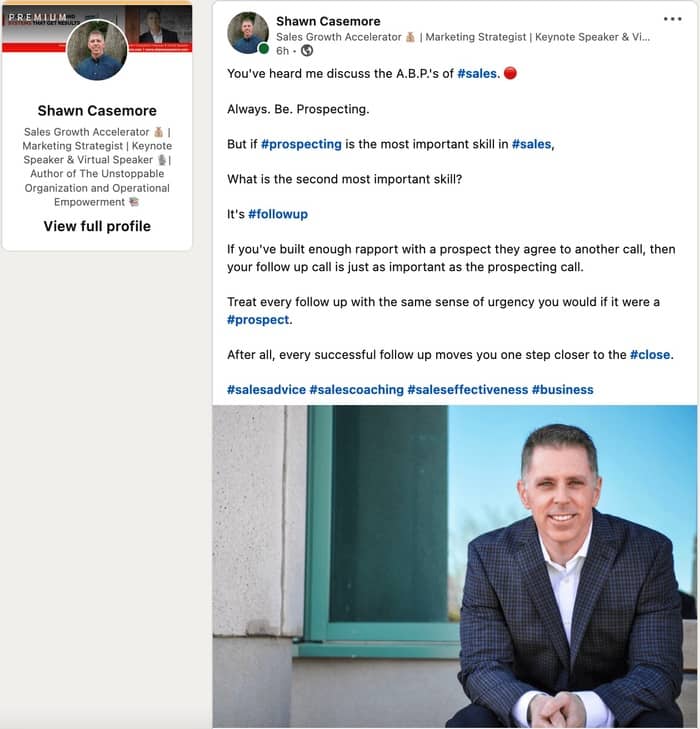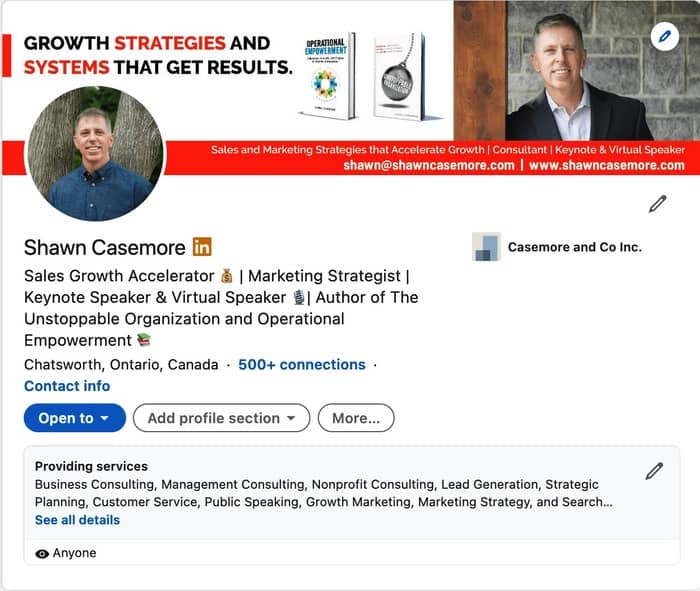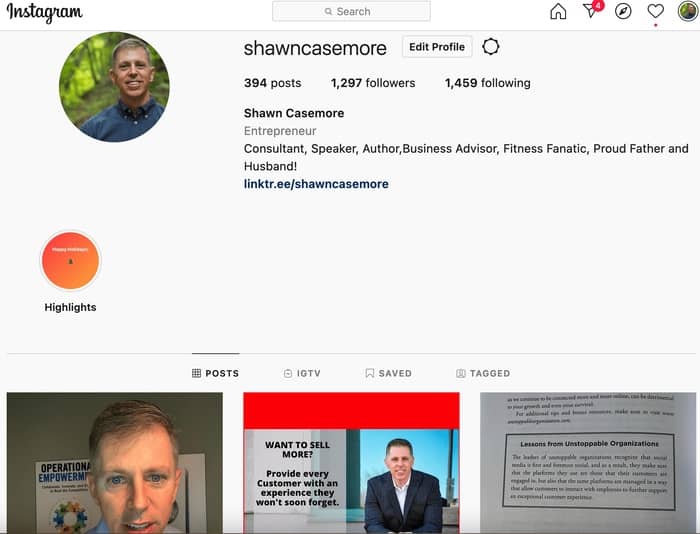If you’re trying to grow your brand or business through social media, then a well-thought-out social media strategy is a must. This post will help you create a plan that works best for you in 9 clear, easy-to-follow steps.
Wondering whether posting on social media is worth it?
If you create a social media strategy, it can be.
Social media continues to be one of the fastest and most cost-effective ways to get in front of your target audience.
But it all starts with being clear on your social media goals and objectives.
So let’s cover the nine steps you need to take to create a social media strategy that achieves your goals, saving you both time and money.

What is a Social Media Strategy?
At its essence, a social media marketing strategy is simply a plan that informs what content you post on social media, as well as the platforms you’ll use.
Consider that nearly 53% of the world’s population today uses social media. If you want to bring awareness to your product, service, event, or brand, there is no better way.
To achieve your objectives, you need a strategy. Randomly posting content in hopes someone will notice is not a marketing plan, it’s a waste of time.
To make it simple, I’ve broken down the nine steps you’ll need to take to formulate a kick-ass social media strategy plan, so grab a pen and piece of paper.
9 Steps to Social Media Strategy Success
What are the steps to creating a social media strategy? Although some might argue building a social media marketing plan is highly complex, in reality, there are only nine key steps you’ll need to take to achieve success.
1. Know Your Audience

You can’t market effectively if you don’t know exactly who you’re marketing to. To answer this question, you’ll need to consider the demographics and psychographics of your potential customers.
How you market to millennials on social media, for example, would be very different than how you might market to senior citizens. That is, if you want your marketing efforts to be successful.
To begin with, consider the following questions to get to know your target audience:
- What is their age?
- Where do they live?
- What are their hobbies?
- What do they like and dislike?
- What do they need?
- What do they want?
Establishing a buyer persona based on this information will clarify how to position your product, service, or solution.
This is the most important step to take if you want to get the attention of, and engage with, your audience.
This report from Pew on social media engagement can help further inform your research.
2. Research the Competition

Now that we’ve clearly identified who our target audience is, we’ll want to take a look at our competition.
Who are the other influencers in your market that your audience engages with?
This isn’t about looking solely at your competition, but rather who is actually getting the attention of your target audience.
Armed with this information, use the following checklist to help inform your social media plan:
- What social platforms are they using?
- What words, phrases, and language do they use?
- Are there common colors or imagery that they use?
- What hashtags are they consistently using?
- Do they use paid ads, organic posts, or a combination of both?
Reviewing what other influencers and marketers in your niche are doing will inform your marketing strategy, helping you to create brand awareness in your niche.
It’s important to mention that this isn’t about copying what others do.
The point of competitive intelligence is to help you learn from others’ success while crafting and validating your unique approach to social media.
3. Determine Where You’ll Share
![]()
What social media sites does your target audience engage on today? What sites might they begin engaging on in the near future?
The answer to these questions, informed by your competitive intelligence, will help you identify and use the social media platforms that your target audience is engaged on.
Marketing on Facebook when your target audience is more likely to use Snapchat, for example, would be a waste of time.
Additionally, you’ll want to identify the most commonly used hashtags on your selected platforms.
Hashtags, although commonly used for searching topics (and therefore being found), aren’t always the same across platforms.
Determining the platforms you’ll use will also determine the types of content you’ll share.
Remember that to engage your target audience on social media, your goal is to fill their newsfeed with highly relevant and intriguing content that will make them want to engage with you, your product, or your service.
4. Schedule Your Social

You may be wondering at this point, how do you execute a social media strategy?
All of our work up to this point is meant to inform what platforms we use, and what kind of content we share.
What we haven’t addressed is how you post and share content.
In some instances, posting live content makes sense. Some platforms like Facebook and LinkedIn are rumored to place priority (allow posts to be shared more broadly) on those posts that are not scheduled.
I post live content daily on my LinkedIn page as a way to put fresh ideas in front of my followers.

If posting live isn’t something you have time for, there are plenty of tools out there that can help you schedule posts on social media.
Some of the more common social media management tools include Buffer, Hootsuite, or HubSpot. Each has its own functionality and is a lifesaver when it comes to automating some of the heavy lifting.
In most instances, these tools provide you a template you can use that can simplify the process of scheduling across multiple social media platforms.
5. Set Goals and Measure with Metrics
Confirming whether your efforts in using social media pay off will be determined by the results you achieve.
Considering the work you’ve done thus far, you’ll want to be sure to have KPIs (key performance indicators) in place to measure your progress.
Regardless of whether you are marketing on TikTok, Snapchat, Twitter, or Facebook, the common social media metrics you’ll want to use include the following:
- Awareness: the reach or number of impressions your posts achieve.
- Engagement: the number of likes, comments, or shares your content receives.
- Conversions: the click-throughs, opt-ins, or number of followers you gain.
Make sure you are clear on the goals you expect to achieve with your social media strategy before you get started.

With this clarity in mind, you’ll also want to ensure that the goals you set follow the SMART approach to goal-setting, namely:
- Specific: goals are written in a way that ensures they are clear.
- Measurable: all goals are easily measured.
- Attainable: the goals you set need to be realistically achievable.
- Relevant: your goals should be relevant to your marketing objectives.
- Time-bound: set deadlines to enable you to measure your success.
To monitor progress against your KPIs, you’ll need to practice what is commonly referred to as social listening.
Most of the social media networks and various scheduling tools I referred to earlier allow you to monitor your social media analytics in real-time.
Determine what’s working and what’s not by keeping a close eye on your social channels.
6. Perfect Your Profiles
At this point, you’re ready to get online.
As a first step, armed with the information you’ve gathered above, you’ll want to set up and optimize your social accounts.
For every social media network you decide to engage upon, you’ll want to have an account that incorporates the branding we identified in step 2.
Fortunately, again, this is a very easy step, as each social platform offers the ability to quickly and easily add a profile picture, description, and in some instances, relevant links.
As you perfect your profiles, you’ll want to consider using common branding across all platforms, while customizing each platform to align with your target audience’s demographic.
Putting a picture of yourself in a three-piece suit might make sense on LinkedIn, but not on Snapchat.
Here is an example of my LinkedIn profile:

Here is an example of my Instagram profile:

7. Craft Great Content
Creating great social media content can be the differentiator between a successful social media marketing strategy and failure.
For your content strategy to be successful, you’ll need to create high-quality content using the principles of content marketing and SEO. This will enable you to ensure the social media channel algorithms work to your advantage.
If content creation isn’t your thing, you have some options.
You can learn how to be a better writer, or you can outsource all of the content creation entirely.
If you do enjoy creating content, you can actually become a freelance writer!
Depending on your demographic, social media network, and competitive intelligence, some of the questions you’ll want to consider when curating content for your social media platform are as follows:
- What form of content does my target audience prefer (i.e., written, video, audio, or all three)?
- If video content is preferred, should it be live or pre-recorded?
- Can I add infographics to spruce up engagement in my content?
Aside from answering these questions, you’ll also want to create a content calendar to organize your content. Having a content calendar can be a lifesaver when it comes to keeping your content organized across multiple platforms.
8. Pay to Play?

A recent study by eMarketer revealed that nearly 30% of adults have made a purchase using a social media ad.
One of the questions you’ll want to consider in your social media marketing strategy is whether you want to use paid ads.
Whether ads make sense or not for you will depend on the results of the work you’ve done so far.
Don’t be deterred by whether the platform offers paid ad opportunities. Most social media platforms today offer some form of paid advertising option and they’ll make sure you know it!
Instead, the primary considerations for whether paid advertising on social media should be part of your strategy are:
- Is your product or service easy to understand?
- Do you want to scale and grow your network quickly?
- Would you prefer to control what audience engages with your content?
- Do you have money to invest in paid advertising?
If you determine that paid ads make sense, you’ll want to identify what platforms these ads make sense on.
For example, if you determine that Facebook and Instagram are two key platforms your target audience is engaging on, it doesn’t mean you need (or should) run ads on both.
Go back to identify what your competitors are doing to determine what platforms you might want to test ads on.
To learn more about how to integrate paid advertising into your social media strategy, you can read this blog.
9. Analyze and Adjust

Not every strategy is perfect out of the gate.
The best social media strategies are those that are used to inform your actions but remain flexible, allowing you to make changes as you learn.
For example, you may find that engagement rates with your content are low. If so, don’t continue with the same content, but don’t scrap the plan entirely.
Instead, make small but intentional adjustments and measure results.
For example:
- Change the post title.
- Adjust the font style or size.
- Test different colors or images for posts.
- Attempt to post at different times of the day.
Let your social media strategy and goals inform your direction, but use social listening to analyze and make adjustments to your approach.
This is how you can make your social media strategy work for you.
Create Your High-Quality Social Media Strategy Today
A great social media strategy is worth the effort.
When you consider the growing popularity of social media and the fact that each platform is working hard to engage its users, you’d be crazy not to leverage social media at some level.
The real question you need to consider is how to ensure your efforts on social media achieve your objectives.
Unlike many other marketing initiatives, social media marketing can be a time dump.
Don’t waste your time.
Use the nine steps above to develop and deploy a social media marketing strategy that will get results.
The post 9 Steps to Create a Social Media Strategy for Marketing in 2021 appeared first on Smart Blogger.

No comments:
Post a Comment